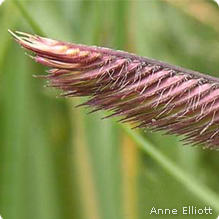
It’s easy to attract water loving birds and other wildlife when you transform your backyard into a marsh. A marsh allows water to stay close to your habitat rather than rushing away in storm sewers.
What You Need
- Flexible plastic pipe to reach from your downspout to the marsh
- Level
- Marsh plants (listed in Step 5)
- Rototiller
- Shovels
- Soil enhancers such as compost, sand or leaves
What You Do
- Check with your homeowner’s association or municipal government to ensure your marsh fits local regulations.
In some communities, you might need to have a drawing done in advance showing your marsh location. Choose a site based on access to water and which is flat enough to accommodate a marsh and to hold water. Using a roof to supply water is a good idea, since gravity will work in your favor to bring water to the marsh and because the water quality tends good. - Outline your marsh’s future location and start digging.
You might need to adjust your marsh’s location as you dig, when you encounter rocks. Take off the sod and dig down about 14 inches. Plan an emergency spillway, such as an area of turf grass at the lower end of the marsh. During excavation, use a level to make sure the ground is even. - Direct your water source into the new marsh area.
Often this will be the downspout from your roof because thousands of gallons of water come off your roof at each rain. Attach a long flexible plastic pipe to your downspout to direct the water into your new marsh. - Fill the marsh with a soil that contains sand and compost.
Very sandy soil is too permeable to adequately hold water. Absorbent clay works well. You can mix the original soil with some sand, compost and leaves. If you have access to a rototiller, you can mix the soil types right there in the marsh. - Choose marsh-friendly plants.
Some examples of marsh plants are spicebush, sweet pepperbush, buttonbush, silky dogwood, wafer ash and prickly ash, cardinal flower, great blue lobelia, swamp milkweed, white turtlehead and Joe Pye weed. Contact your local native plant society to find which marsh plants grow well near you.

